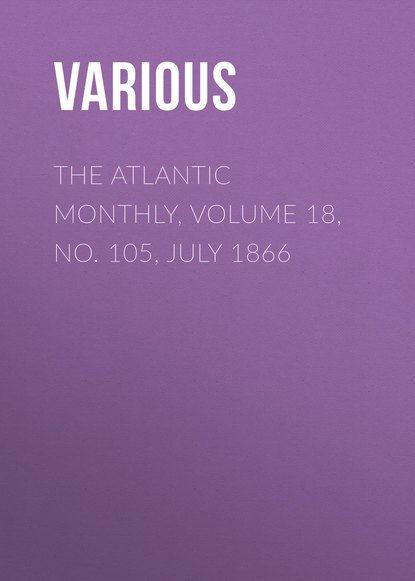 Полная версия
Полная версияThe Atlantic Monthly, Volume 18, No. 105, July 1866
2
The reader may be curious to see how smoothly and naturally these dactyls (so forced in the translation) flow in the original:—
"Aus der staubigenResidenz,In den laubigenFrischen Lenz—Aus dem tosendenGassenschwallZu dem kosendenWasserfall,—Wer sich rettete,Dank's dem Glück,Wie mich betteteMein Geschick!"3
The name consecrated by De Saussure to designate certain rocks in Switzerland, which have had their surfaces rounded under the action of the glaciers. Their gently swelling outlines are thought to resemble sheep resting on the ground, and for this reason the people in the Alps call them roches moutonnées.
4
The atlas in Martins's "Journey to Brazil," or the sketch accompanying Bates's description of these hills in his "Naturalist on the Amazons," will give an idea of their aspect.
5
The Mountain Assinaboins, of which tribe the Black Snake is (if living) a distinguished ornament, were visited more than a hundred years since by an English clergyman named Wolsey, who devised an alphabet for their use. The alphabet is still used by them, and they keep their memoranda on dressed skins. With the exception of the Cherokees, they are, perhaps, the only tribe possessing a written language. They have no other civilization.
6
I do not feel at liberty to give the name of this excellent man, now perhaps no more. In 1861, he lived and labored, with a gentleness and zeal worthy of the cause he heralded, as a missionary among the Kalispelm Indians, on the west slope of the Rocky Mountains. Such devotion to missionary labor as was his may well challenge admiration even from those who think him in fatal error. His memory will long be cherished by those who knew the purity of his character, his generous catholicity of spirit, and the native and acquired graces of mind which made him a companion at once charming and instructive.
7
Of course we have no disposition to deny M. Renan's right to reduce Christ and every other historic figure to the standard of the most modern critical art. We merely mean to say that this is all M. Renan does, and that the all is not much.



